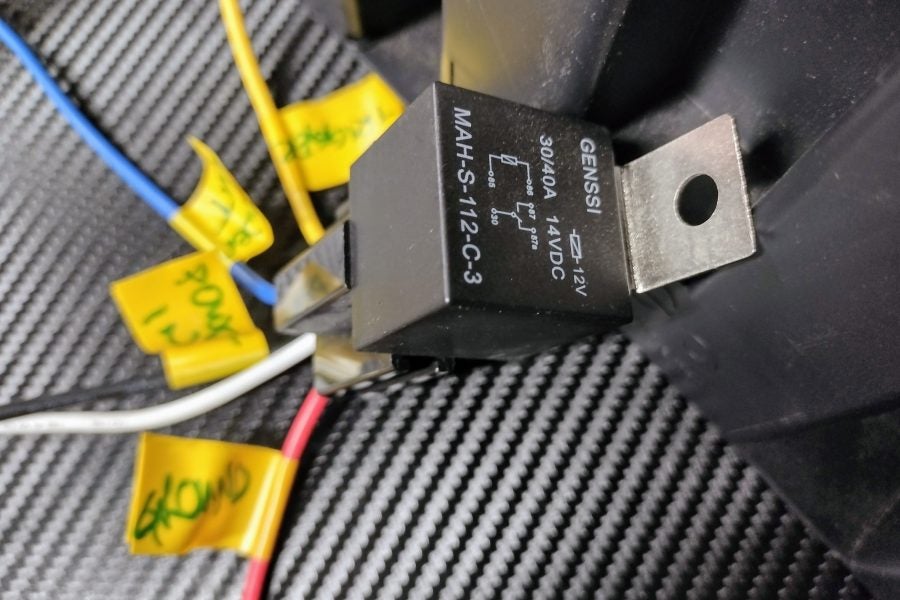Whether you’d like to power a GPS, add some extra lights, or upgrade your horn, most electrical aftermarket add-ons need a relay. We’ve covered motorcycle batteries already, so the next step from there is learning to wire in your own peripherals like these.
Not For CAN bus
Please note: This wiring advice does not apply to motorcycles with a CAN bus system. CAN bus is less of a wiring harness and more of a smart network filled with microcontrollers. If you try to add a relay and power it by tapping into your expensive motorcycle’s CAN bus wiring harness you may trigger an expensive failure. In order to properly tap into a motorcycle’s CAN bus power, you will need to purchase a CAN bus-specific device. That’s a separate article. Stay tuned!
What is a Relay?
A relay is an electromagnetic switch. The switch inside a relay activates and provides power when the internal trigger receives power. When you want to add a device to your motorcycle, but you only want it powered on while the motorcycle itself is on, a relay will provide that functionality.
The relay also protects your bike’s wiring system. For high-draw aftermarket add-ons like lights and loud horns, a relay means you will not melt the wiring at your horn or headlight switch by sending too much power through it. When you want a device powered without a switch, but on when the bike is on, and off when the bike is off, a relay will shine.
The relay itself has four (sometimes five) poles, and each one is labeled.

The poles on an automotive relay and what they do. Credit: Kate Murphy
Note that you will sometimes see relay wiring diagrams like the above, but with the 87 and 30 poles swapped. That’s OK! Electricity runs in a circle, and it is not directional. A live wire is a live wire, so powering your device with the 30 pole, and receiving power from the positive battery terminal with the 87 pole is A-OK. Just remember that the line from your battery must have a fuse in it, the closer to the battery the better, so that if the bike’s charging system gets overenthusiastic, the fuse will pop instead of setting the bike on fire.
What is a Relay Harness?
Relays are often sold with harnesses, and a harness is a plug for the relay with lengths of wire corresponding to the poles. Those wires make it easy to connect to your bike’s electrical system. When I am wiring anything, I use light-colored electrical tape and write on it with a Sharpie, to label each of these wires:
- 87: POWER TO DEVICE
- 86: TRIGGER WIRE POWER
- 85: GROUND
- 30: POWER FROM BATTERY +
The other three poles are straightforward, so we’ll focus on the trigger wire, number 86, whose power activates the relay switch.
Since we’re using a relay to provide “keyed” power, that is, power only when the bike is on, we’ll need to find a wire that carries 12 volts only when the bike is on. If you know your bike’s wiring system at all, the taillight wire is an excellent trigger wire to tap into.
Finding a Trigger Wire
If you do not know your bike’s wiring, I recommend finding a plug under the seat of your bike, unplugging it, and using a multimeter stuck into the holes to test them for current. Turn the bike on and off while testing for current and you will find one that is on when the bike is on, and off when it’s off. Use the wire that corresponds to the hole in the plug as your trigger. Motorcycle brand- and model-specific forums can be a great help here. Someone else has tapped into the same bike you ride for power.
Tapping a Wire
I will recommend against “vampire clips” in this application (or any, honestly); they have a distressing tendency to clip wires clean in half instead of only accessing the metal. I like “Posi-taps.” Even though they are relatively expensive at about $1 per piece, they are quite foolproof. They’re especially easy for beginners who don’t want to cut into their motorcycle’s wiring harness.
Not comfortable with adding wiring to your motorcycle? Stay tuned for the next installment, where we review some wiring best practices.







